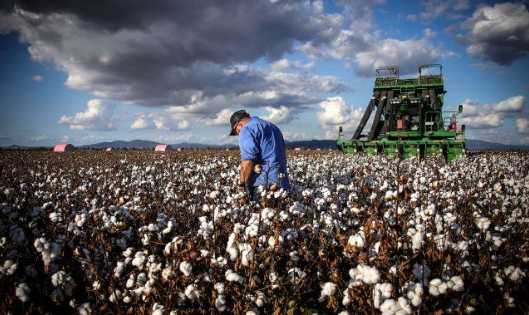International news: Australian cotton crop expected to be bumper in 2023

According to forecasts from the Australian Department of Agriculture, Australia will have a very bumper cotton crop in 2023. This is due to the successive droughts and floods that have hit Australia in recent years, causing a significant impact on the country's cotton production. However, recent weather data shows that Australia's major cotton growing regions are in the midst of a wet season with ample rainfall, which creates good conditions for cotton production in 2023. As a result, cotton production in Australia is expected to reach a record high and have a significant impact on the global cotton market.
Cotton Australia said the industry was expecting a good cotton crop despite continued rainfall in much of New South Wales and Queensland affecting farms and in some cases delaying picking and planting.

After 2 years of severe drought, cotton farmers celebrated good rainfall that led to 5.5 million bales of cotton last year, however the continued rainfall has caused problems for farmers.
Cotton Australia said in a press release that late last week the NSW emergency services reported that every inland river catchment from the Queensland border to the Victorian border was full or flooded, and issued 99 activity alerts and nine major flood warnings.
Cotton Australia chief executive Adam Kay said his thoughts were with all the farmers who had suffered loss and damage from the floods. "We are hearing reports of significant infrastructure damage from the floods and we are keeping government stakeholders informed."
Severe flooding has occurred in some cotton growing areas, including Narrabri and Moree, but at this stage the main damage appears to be to winter crops such as wheat and barley.
"The longer planting window in northern NSW means growers can plant crops until late November to maintain good yields for the following year. We are confident that this can be achieved if the rainfall stops long enough to get the crop into the ground."

Unfortunately, the situation from the southern Macquarie Valley to the Victorian border is quite different, with the planting window closing early and data showing that the later the crop is planted in the region, the lower the yield.
"Overall, at this stage, production is expected to be around 10% lower in 2023 and global demand for our cotton is expected to remain strong due to around 1/3 of the crop being sold early." We can sell every bale of cotton, so we are hopeful that the situation will improve quickly."
As further evidence of the different conditions facing farmers, cotton growers in the Northern Territory and Far North Queensland have not been as affected by the floods as those in the south and expect to plant in December for picking in the middle of next year. Further south, many farmers are already in the ground planting seed.
In some areas of southern Queensland, the last cotton in the process of being picked for 2022 has been delayed by the floods. In the Central Highlands and CallideDawson in Queensland, cotton planted in August has grown well despite some hail damage.
Kay said farmers with expertise and adaptability would get a good crop. "Every grower has to deal with adverse weather events, but we have the science, sustainable practices and innovation to overcome temporary challenges and maintain consistency in quality and supply."
2023-03-24 09:38


